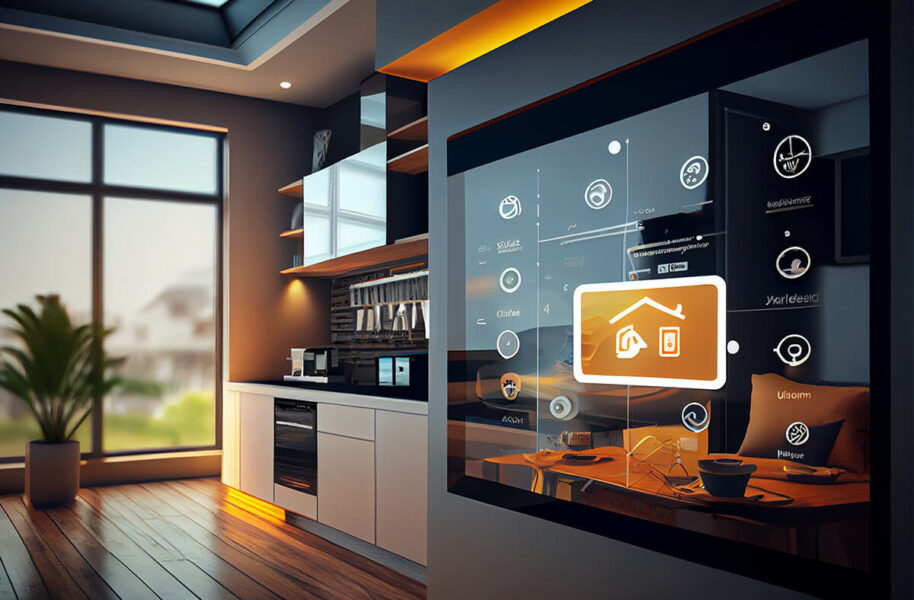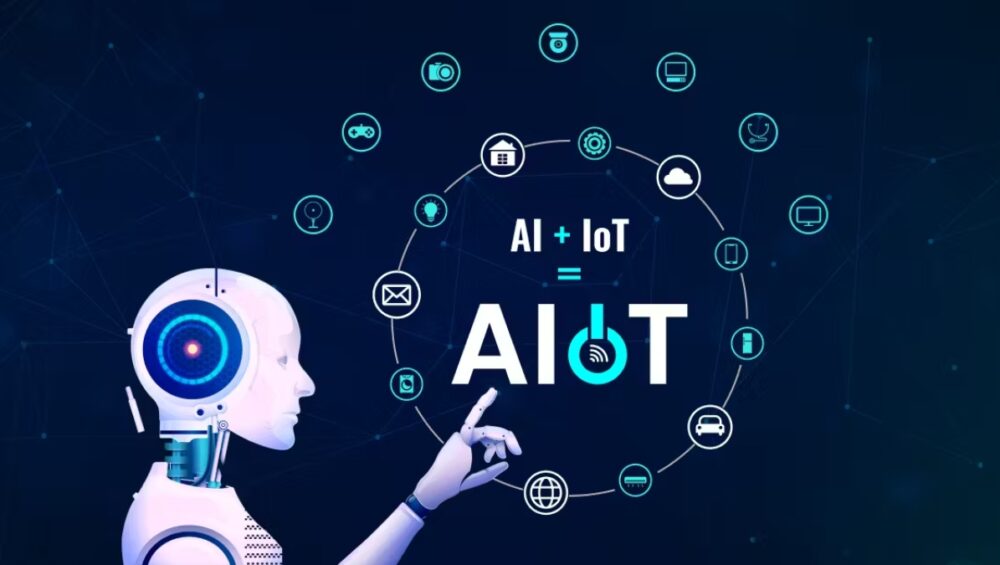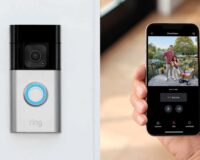The convergence of Artificial Intelligence (AI) and the Internet of Things (IoT) has unleashed a wave of transformative potential across industries worldwide. As AI continues to mature and IoT devices become increasingly pervasive, their integration is reshaping the landscape of technology and business operations. This article explores the foundations of AI with IoT and delves into the profound benefits it offers across various sectors.
Foundations of AI with IoT
At their core, AI and IoT are distinct technologies with complementary functionalities. IoT devices, ranging from sensors and actuators to smart appliances and wearable gadgets, collect vast amounts of data from the physical world. This data, often referred to as “big data,” encompasses a myriad of information about environmental conditions, user behavior, and system performance.
AI, on the other hand, empowers machines to interpret and act upon this data intelligently. Through sophisticated algorithms and machine learning models, AI can analyze patterns, make predictions, and even autonomously optimize processes. When integrated with IoT, AI brings a layer of intelligence to the data generated by connected devices, unlocking new capabilities and efficiencies.
One of the key foundations of AI with IoT lies in data synergy. IoT devices generate an unprecedented volume of real-time data, but without effective analysis and interpretation, this data remains largely untapped. AI algorithms excel at extracting actionable insights from complex datasets, enabling organizations to derive value from their IoT investments.
Moreover, AI enhances the autonomy of IoT systems. By embedding intelligence into connected devices, they can adapt and respond dynamically to changing circumstances without human intervention. This autonomy is particularly valuable in applications such as industrial automation, smart cities, and autonomous vehicles, where real-time decision-making is critical.
Benefits of AI with IoT

The integration of AI with IoT offers a plethora of benefits across various domains, revolutionizing industries and improving quality of life. Some of the prominent advantages include:
- Enhanced Operational Efficiency: AI-powered analytics enable predictive maintenance, optimizing asset performance and minimizing downtime. By analyzing IoT-generated data, organizations can identify patterns indicative of equipment failure or degradation, allowing for proactive maintenance interventions. This predictive approach reduces unplanned downtime, lowers maintenance costs, and prolongs the lifespan of assets.
- Improved Resource Management: In sectors like agriculture and energy, AI with IoT facilitates precise resource management. By monitoring environmental conditions, soil moisture levels, and crop health through IoT sensors, AI algorithms can optimize irrigation schedules, recommend fertilizer application rates, and even predict yield outcomes. Similarly, in energy management, AI-driven insights help utilities balance supply and demand, optimize distribution networks, and enhance energy efficiency.
- Enhanced Customer Experience: The combination of AI and IoT enables personalized and context-aware customer experiences. In retail, for instance, IoT sensors track customer movement within stores, while AI algorithms analyze this data to deliver targeted promotions and recommendations in real-time. In healthcare, wearable IoT devices monitor patients’ vital signs, with AI algorithms providing early detection of health issues and personalized treatment recommendations.
- Smarter Cities and Infrastructure: AI with IoT is instrumental in building smart cities and resilient infrastructure. By integrating IoT sensors into urban infrastructure such as traffic lights, waste management systems, and public transportation networks, cities can gather real-time data to optimize traffic flow, reduce congestion, and enhance public safety. AI algorithms analyze this data to predict traffic patterns, optimize routing, and improve overall urban efficiency.
- Advancements in Healthcare: In healthcare, AI with IoT is driving transformative advancements in patient care and medical research. IoT-enabled medical devices, coupled with AI-powered analytics, facilitate remote patient monitoring, early disease detection, and personalized treatment plans. Furthermore, AI algorithms analyze vast amounts of medical data to identify disease trends, discover new treatment options, and accelerate drug development processes.
- Safety and Security: AI with IoT enhances safety and security across various domains, including home security, industrial safety, and cybersecurity. IoT-connected surveillance cameras, motion sensors, and access control systems provide real-time monitoring of premises, while AI algorithms detect anomalies and potential security threats. In industrial settings, IoT devices combined with AI enable predictive safety analytics, mitigating workplace hazards and reducing the risk of accidents.
Challenges in Integrating AI and IoT
The integration of Artificial Intelligence (AI) with the Internet of Things (IoT) holds immense promise, revolutionizing industries and driving innovation. However, this convergence also presents a unique set of challenges that must be addressed to unlock the full potential of AI-driven IoT applications. In this section, we explore some of the key challenges faced in integrating AI and IoT and discuss strategies to overcome them.
- Data Quality and Security: One of the primary challenges in AI with IoT integration is ensuring the quality and security of data collected by IoT devices. IoT devices generate vast amounts of data, often in diverse formats and from heterogeneous sources. Ensuring the accuracy, completeness, and reliability of this data is essential for meaningful AI-driven insights. Additionally, data security concerns, such as unauthorized access, data breaches, and privacy violations, pose significant risks. Implementing robust data governance frameworks, encryption protocols, and access controls is crucial to mitigate these risks and maintain data integrity and confidentiality.
- Scalability and Interoperability: The scalability and interoperability of AI and IoT systems present significant challenges, especially in large-scale deployments involving diverse devices and platforms. IoT ecosystems comprise a multitude of devices with varying capabilities, communication protocols, and data formats. Integrating these heterogeneous devices seamlessly into AI workflows requires standardized interfaces, protocols, and middleware solutions. Moreover, as IoT deployments scale to accommodate millions of connected devices, ensuring the scalability and performance of AI algorithms becomes paramount. Designing modular, extensible architectures and leveraging cloud-based platforms can help address scalability and interoperability challenges effectively.
- Edge Computing and Latency: AI with IoT applications often require real-time or low-latency processing of data, necessitating the use of edge computing architectures. Edge computing involves performing data processing and analytics closer to the data source, reducing latency and bandwidth requirements. However, deploying AI models on resource-constrained edge devices poses technical challenges, including limited computational power, memory, and energy constraints. Balancing the trade-offs between edge and cloud computing, optimizing AI algorithms for edge deployment, and leveraging edge-native frameworks are essential strategies to address latency and performance concerns in AI with IoT applications.
- Complexity and Integration Costs: Integrating AI with IoT introduces complexity and integration costs associated with deploying, managing, and maintaining interconnected systems. Developing and deploying AI models requires specialized expertise in machine learning, data science, and software engineering, which may not be readily available to all organizations. Moreover, integrating AI capabilities into existing IoT infrastructures entails upfront investments in hardware, software, and training. Overcoming these challenges requires a strategic approach to prioritize use cases, establish clear business objectives, and collaborate with technology partners and service providers to streamline integration efforts and reduce costs.
- Ethical and Regulatory Considerations: AI with IoT raises ethical and regulatory considerations related to data privacy, algorithmic bias, and accountability. The proliferation of IoT devices collecting sensitive personal data raises concerns about user consent, data ownership, and regulatory compliance, such as GDPR and CCPA. Additionally, AI algorithms may exhibit biases inherent in training data, leading to discriminatory outcomes and social injustices. Addressing these ethical and regulatory challenges requires proactive measures, including transparent AI governance frameworks, bias mitigation techniques, and stakeholder engagement to ensure accountability and fairness in AI-driven IoT applications.
Key Applications of AI with IoT

Introduction: The integration of Artificial Intelligence (AI) with the Internet of Things (IoT) is reshaping industries and revolutionizing everyday life. This synergy empowers organizations to collect, analyze, and act upon vast amounts of data generated by IoT devices, unlocking new opportunities for innovation and efficiency. We explore some of the key applications of AI with IoT across various sectors and highlight their transformative impact.
- Smart Homes: AIoT enables residences to anticipate occupants’ needs by adjusting environmental factors like lighting, heating, and cooling based on preferences and occupancy patterns. Additionally, AIoT security systems utilize facial recognition and pattern learning to distinguish between authorized individuals and intruders, enhancing home security.
- Smart Manufacturing: Smart manufacturing harnesses the power of AI and IoT to optimize production processes, improve quality control, and enhance operational efficiency. IoT sensors embedded in manufacturing equipment collect real-time data on machine performance, product quality, and environmental conditions. AI algorithms analyze this data to predict equipment failures, schedule maintenance proactively, and optimize production schedules for maximum throughput. By enabling predictive maintenance and process optimization, AI with IoT minimizes downtime, reduces costs, and enhances overall productivity in manufacturing facilities.
- Precision Agriculture: In agriculture, AI with IoT enables precision farming techniques that optimize resource usage, increase crop yields, and promote sustainable practices. IoT sensors deployed in fields monitor soil moisture levels, temperature, and nutrient content, while drones and satellite imagery provide high-resolution data on crop health and growth patterns. AI algorithms process this data to generate actionable insights, such as personalized irrigation schedules, targeted fertilizer application rates, and early detection of pest infestations or crop diseases. By optimizing resource management and crop cultivation practices, AI with IoT helps farmers improve yields, conserve resources, and mitigate environmental impact.
- Healthcare Monitoring and Remote Patient Care: AI with IoT revolutionizes healthcare delivery by enabling remote patient monitoring, personalized treatment plans, and proactive disease management. Wearable IoT devices, such as smartwatches and biosensors, continuously collect data on patients’ vital signs, activity levels, and medication adherence. AI algorithms analyze this data in real-time to detect anomalies, predict health deterioration, and provide timely interventions. By enabling remote monitoring and proactive care management, AI with IoT empowers patients to take control of their health, reduces hospital readmissions, and improves overall health outcomes.
- Smart Cities and Urban Infrastructure: Smart cities leverage AI with IoT to enhance urban infrastructure, improve public services, and promote sustainable urban development. IoT sensors deployed throughout cities collect data on traffic flow, air quality, waste management, and energy consumption. AI algorithms analyze this data to optimize traffic signals, predict congestion patterns, and recommend alternative transportation routes. Additionally, AI with IoT enables predictive maintenance of critical infrastructure, such as bridges, roads, and utilities, reducing maintenance costs and minimizing service disruptions. By enhancing urban efficiency and sustainability, AI with IoT creates more livable and resilient cities for residents.
- Intelligent Energy Management: AI with IoT transforms energy management by optimizing energy generation, distribution, and consumption across diverse sectors. IoT devices installed in energy infrastructure, such as smart meters and grid sensors, collect real-time data on energy usage, grid stability, and renewable energy generation. AI algorithms analyze this data to forecast energy demand, optimize grid operations, and balance supply and demand in real-time. Additionally, AI with IoT enables demand response programs, energy-efficient building management systems, and predictive maintenance of energy assets, reducing energy costs and carbon emissions while promoting renewable energy integration.
Conclusion
The impact of AI on IoT is poised to revolutionize industries, transform societies, and create new opportunities for innovation and growth. By harnessing the power of data-driven insights, intelligent decision-making, and autonomous systems, AI-driven IoT enables organizations to unlock new capabilities, optimize operations, and drive sustainable development. As we navigate the evolving landscape of intelligent connectivity, collaboration, innovation, and responsible deployment practices will be key to realizing the full potential of AI-driven IoT and shaping a more connected, intelligent, and sustainable future.






